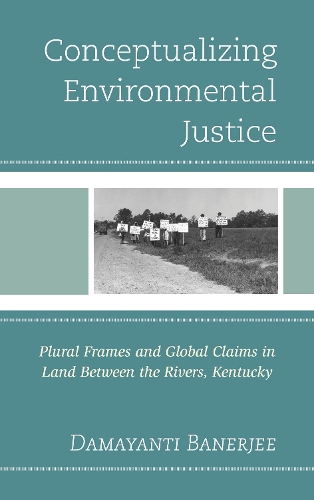
Conceptualizing Environmental Justice: Plural Frames and Global Claims in Land Between the Rivers, Kentucky
(Hardback)
Publishing Details
Conceptualizing Environmental Justice: Plural Frames and Global Claims in Land Between the Rivers, Kentucky
By (Author) Damayanti Banerjee
Bloomsbury Publishing PLC
Lexington Books
26th December 2017
United States
Classifications
Professional and Scholarly
Non Fiction
Environmental science, engineering and technology
Regional / International studies
Social classes
Rural communities / rural life
Environmental management
363.7009769
Physical Properties
Hardback
126
Width 158mm, Height 239mm, Spine 14mm
367g
Description
Conceptualizing Environmental Justice evolved from an ethnographic study of an environmental justice movement in a rural community called Land Between the Rivers in Kentucky. The environmental movement emerged as a result of collective displacement for the construction of two dams and an environmental refuge over a period of sixty years. This book explores the historical and contemporary efforts to mobilize the community and asks what specific strategies and tools were adopted and how these tools coalesced into four justice themes: cultural injustices, economic deprivation, institutional fairness, and political agency. It explores how each theme shaped and informed the displaced residents efforts to protect their rights and seek justice. This book argues that expanding the conceptual foci of environmental justice theory and identifying both distributive and non-distributive themes of justice allows us to understand the complexities of environmental movement narratives and examine what shape environmental justice movements will take in the future.
Reviews
Conceptualizing Environmental Justice was a pleasure to read. Academically rigorous and yet accessibleBanerjee is a great storytellerthe text taught me a great deal, from how we think about justice to why we cannot afford to give up the fight for it, in all its forms and with as many strategies as possible at our disposal. -- Michael S. Carolan, Colorado State University
This is an important contribution to understanding the array of environmental injustices and how different approaches are mobilized at different stages of displacement and dispossession, particularly in the construction of dams. Banerjee integrates different approaches to environmental justice to strategies of communities in environmental conflicts with powerful actors. She does a masterful job of linking strategic choices of community mobilization to the local and more global interests in justice in general and specifically environmental justice. Thus she shows how denial of cultural voice can become a part of the environmental justice movement, legitimizing local definitions of the situation when confronted with science that presumes to be acting in some kind of greater public good. The ethnographic method and the reflexive approach to the place and its people gives a reader a lived sense of the communitys continuing search for justice in the face of its multiple losses of place and identity. -- Cornelia Flora, Iowa State University
Damayanti Banerjee has produced a work of great significance. With keen theoretical insight and powerful ethnographic detail, she demonstrates that communities articulate and define environmental justice in far broader terms than most scholars have considered or imagined. This book is also remarkable as a study of environmental justice movements in rural Americaa spectrum of spaces and cultural contexts that have received insufficient attention in the field. Banerjee brings together skillful analysis with painstakingly gathered data that culminate in a study that fills me with hope for the future of environmental justice scholarship and movements. -- David Naguib Pellow, University of California, Santa Barbara
Author Bio
Damayanti Banerjee is research faculty affiliate at Colorado State University.
